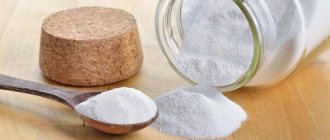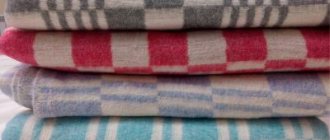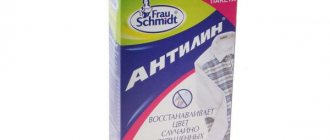A common problem that everyone has encountered at least once is puffs that appear on clothes after washing. Gentle washing will help preserve your items. If old models of washing machines were, alas, deprived of such a function, modern ones are necessarily equipped with it. Each one has either an inscription or a “gentle wash” symbol. Let's tell you more about the advantages of this mode.
Let's be honest about the regime
It is designed for cleaning items made from thin or wrinkled fabrics. These include silk, viscose, linen - as well as wool, microfiber and many other materials. Improper washing of clothes made from such fabrics is fraught with a sad outcome: puffs, pilling, stains - thus, shirts and sweaters will be hopelessly damaged. The gentle wash function is designed to avoid these problems.
It is not difficult to understand whether an item requires such a regime when washing: each item has a label attached to it, which contains a recommendation on the type of cleaning. The delicate wash icon on the label looks like a drawing of a bowl of water with two horizontal lines underneath it. Some manufacturers put numbers in the basin - 30 or 40. They indicate the temperature at which it is better to wash this item (at 30 or 40 degrees, respectively).
Differences between delicate washing and other modes:
- using more water (thus the mechanical impact on clothing becomes gentler);
- low temperature (this reduces the shedding of things, they will not recolor each other during washing);
- slow and smooth movements of the drum (this ensures that the item does not tear/roll and the decorations remain in place);
- delicate spin (with fewer revolutions - 600-800 per minute, which does not damage clothes).
Sample program
We told you how long it takes for a delicate wash to wash; to be more precise, we outlined the ranges. Likewise, we clarified the issue of temperature. If you are interested in how many degrees and revolutions you need to set in a particular case, remember the following combinations:
- If the program duration is 30 minutes, you can set the temperature to 40°;
- At 40 minutes – reduce heat to 35°;
- If you plan to wash for 50-60 minutes, set the minimum 30°.
Of course, when choosing how many degrees to set on the program panel, take into account the individual characteristics of the fabrics that lie in the drum. Read label recommendations. You should do the same when choosing how many revolutions to set for the spin cycle, and whether you need to turn it on at all. The tag will help you!
And remember the main rule! When caring for sensitive tissues, it is better to overdo it than to rely on the Russian “maybe”. When in doubt, use the most gentle settings. It's better to wash your favorite dress twice than to throw it in the trash. Read on to learn how to wash a blanket in a washing machine.
We are looking for a delicate machine wash icon
Finding the “gentle mode” sign is easy for anyone who can read. What about graphic images? How do you know which is a delicate wash?
Different brands have different icons. Today there are countless washing machine manufacturers on the market, and it is impossible to name each one.
On cars, this mode is indicated by a cute flower. The flower symbol is also used by Zanussi, Electrolux, and Indesit. Ardo has a feather in a dotted square on the panel, but Bosch shows delicacy with a dress with a butterfly. For Beko it is a snowflake icon, for Kandy it is a cloud with an arrow.
Washing machines "Indesit" with vertical loading. How to use correctly
The purchase of washing devices with this type of storage is due to the small amount of space in the room for installing the machine. The disadvantages of the models are a higher noise level compared to machines with a horizontal loading method, and limited weight of things.
The maximum weight of items is 7 kilograms. The spin speed can be 1,200 rpm. Indesit ITW E 71252 G machines have built-in leakage protection; the drum volume is 42 liters. At the end of the wash, a beep sounds. The delayed start timer is 24 hours.
The list of programs consists of 14 items. Among them there are special ones: “Children’s things”, “Bed linen”, “Jeans”. Additional functions: “Rinse”, “Easy ironing”. The machine is equipped with a screen that displays the time until the end of the wash.
Nuances
- Make sure that the item is machine washable (a crossed out basin with water means that the item cannot be washed at all, a hand in the basin means that you can only wash it with your hands).
- Delicate washing requires a special approach to each item being washed, especially if it is made of silk or wool.
- It is not enough to run a delicate wash in the washing machine: in order not to doubt the safety of the product, you must first put it in a bag.
- To protect clothes made from delicate fabrics from excessive curling when washing, do not fill the machine to the top: manufacturers advise reducing the number of items by half.
- Before using this function, read the section in the instructions: some people understand delicate washing as items made of wool, others as synthetics, and others as silk. The instructions should indicate what fabrics this mode is intended for.
- Wash cashmere and silk separately; separate clothes by color and do not let things spend a lot of time in water (especially woolen ones).
Preparatory stage
Before you begin, you need to properly prepare things:
- The clothes are turned inside out.
- Since the bottom of the product and the sleeves can stretch out during wet processing, they should be protected by threading a needle or any other strong and non-fading thread and stitching the problem areas along the edge with wide stitches. Pair the thread only after the product has completely dried.
- Are your clothes stained or heavily soiled? This means that before washing, they soak it - pour cool water into a basin, generously soap the problem areas, and leave for 20 minutes.
- Before washing knitted items, you should carefully study their label: items made from natural fabrics are washed in water at a temperature no higher than 40-50°C, those made from synthetic fabrics - up to 40°C. Do not wash with hot water, as high temperatures may cause the product to shrink.
Delicate laundry detergents
Why are ordinary, universal products not suitable for cleansing? The reason is significant: such products are aggressive, they contain components that can destroy the structure of “delicate” tissue.
To prevent this from happening and to avoid having to throw the item away, purchase special phosphate-free powders for washing delicate materials - or liquid detergents with an identical composition. They rinse well, are non-allergenic and soften the fabric.
When choosing a product, consider the following factors:
- It should thoroughly wash and remove the slightest dirt.
- It keeps the colors bright and the appearance original without pilling.
- The product does not cause an allergic reaction or irritation (it is marked as having passed dermatological tests).
- Environmentally friendly (biodegradable).
- Unscented or with a pleasant, unobtrusive aroma.
- The product gives clothes softness.
As an example, we give popular means. First of all, this is the German brand Nordland. These products are available in liquid form and are used in all models of washing machines. The Nordland product line is effective at 20 degrees, does not contain dyes, and is harmless to the skin.
SION products received positive reviews. Like Nordland, they are dye-free and biodegradable. The only difference: SION is recommended to be used at temperatures of 30-60 degrees.
You can also pay attention to the brands CleanOK, Laska, Cashmere. The choice of such products is large, and you can find a product for every budget and taste.
Expert advice
To ensure that items made from delicate fabrics retain their appearance for a long time and do not stretch or tear during the cleaning process, washing machine experts advise the following:
- It is not recommended to wash items in an automatic machine that are contraindicated for such a program (there is a “hand wash only” sign on the label);
- carefully select modes, taking into account the duration of the process, maximum water heating, and the intensity of drum rotation;
- It is better to wash things made of fabric with sequins, beads, and bead embroidery with your own hands - even with the most gentle and delicate handling in a machine, they can easily lose their appearance and the beads can come off;
- choose the right washing powder and additional special products for cleaning the product;
- use fabric conditioner (it gives the product a pleasant aroma, makes the item soft and gentle to the touch, removes static electricity, removes creases, makes ironing easier);
- the process of cleaning the product from contaminants should be minimal in time (prolonged rotation of the products in the drum can negatively affect their appearance);
- load the washing machine correctly (no need to put more weight in the drum than is provided for by the technical characteristics of the machine).
For an overview of the “Hand Wash” mode, see below.
If there is no gentle mode...
You looked all over the place, but couldn’t find either the inscription or the delicate wash icon on the machine? Wait to be upset, there is an explanation for this. Some manufacturers of washing machines for woolen and silk products use programs of the same name, and therefore do not provide a separate delicate mode.
Carefully read the names of the programs on the washing machine: they probably contain “wool”, “silk” (or “delicate linen”). There are also “delicate fabrics”, “sensitive” or even “hand wash”. Each of these modes is an analogue of delicate; As for the manual program, this is a function that is extremely reminiscent of actual cleaning by hand. Therefore, it guarantees careful handling of the item and allows you to wash even tulle.
However, even if your machine is suddenly deprived of these programs (which is unlikely), you are able to set up the delicate mode yourself. What is needed for this? Here's what:
- set the temperature to 30 degrees;
- turn off the spin;
- turn on additional rinse;
- Place the clothes in a laundry bag for delicate fabrics.
These actions will not help the drum spin smoothly (alas), but will make it possible to wash delicate items in your machine.
Application cases
The program is designed for fabrics that cannot withstand hot water, intense spinning or strong friction. It is set for products whose labels contain a prohibiting symbol or an icon indicating hand washing. This is a universal sign.
It depicts a hand immersed in a basin. Sometimes there is a number that indicates the water temperature. The symbol prohibiting machine processing looks like a crossed out unit. For such cases, there are special modes.
Hand wash sign
The delicate category includes fabrics that can easily tear, lose color, change size or become deformed. These most often include:
viscose;
silk;
cashmere or natural wool.
Sometimes the program is used to wash sneakers, textile shoes, sneakers, as well as clothes with embroidery or other decorations. “Hand wash” is effective for processing the following types of products:
- tights and underwear;
- trousers and suits;
- down jackets, jackets and coats;
- clothes with decorative elements;
- curtains made of tulle or organza.
The “Hand wash” mode is combined with the “Wool” program
What are the dangers of delicate washing?
“Doesn’t the sensitive program have any drawbacks?” - you ask with disbelief and you will be right. Like any phenomenon, gentle washing has a number of disadvantages that you need to be aware of.
The first and very significant (what a pun!) drawback is the proliferation of bacteria. Washing in a delicate program occurs at low temperatures - 30-40 degrees. This means that bacteria and microbes that have settled on clothing do not die. Not only that: they also manage to multiply and jump from washed linen to towels, dishes, and our hands. In the United States, a special study was conducted on this matter. His results showed: on underwear washed in a delicate cycle, feces were found - 0.1 grams on each item. And this is a breeding ground for bacteria. And it is useless to fight them solely by sorting clothes by color and/or fabric - you can defeat microbes only with the help of high temperatures, the researchers conclude.
If possible, try not to wash at least children's clothes at low degrees. As for “adult” products, pre-soak them in a soap solution, and thoroughly soap stains on clothes with laundry soap.
In addition to bacteria, powder also remains on clothes washed on the delicate cycle - which is why it is better to use liquid products. Dust mites, a source of allergic reactions, also “linger” on bed linen. They die exclusively in boiling water. The best thing you can do in this situation is not to buy bed linen made of silk and other “delicate” fabrics. It would be correct to purchase a bed made from materials that can withstand temperatures of 90-95 degrees.
It has long been known: “Forewarned is forearmed.” Use our recommendations, and no difficulties in this matter will affect you!
a brief description of
The hand wash program is used in cases where you need to wash your laundry as delicately as possible. The drum rotates minimally in this mode. And spinning either occurs at minimum speed or is almost absent.
The water heats up to 30-40 degrees Celsius. When choosing this method, you should remember that the machine drum can be loaded only half of the maximum load. For example, only 3 kilograms can be loaded into a machine designed for six kilograms of laundry.
This option is labeled the same on almost all machines. The sign includes an image of a hand and a basin of water. The number written on the basin indicates the water temperature. Some washing machines contain two hand wash programs. Both contain the sign of a basin of water. However, one shows the number 30, and the other 40. It should be noted that on some washers all options are labeled with words.
And the last thing - what to do if something “terrible” happens and the woolen item shrinks?
Correcting the situation is possible if the product has shrunk a little - one size, sometimes it is possible to correct it if it has shrunk by two and the product is not tight.
- Pour room temperature water into a basin, generously pour in wool conditioner , and soak the item for 30 minutes to an hour. It will become softer, more pliable.
- Stretch it carefully directly in the water to the desired size.
- While it’s drying, come up and sip, too, with less effort.
But if from 50 it went to 44-40 (3-4 sizes), this method is unlikely to help you. Severe shrinkage is the death of a thing in the form in which it existed before. However, there is a radical way to enjoy your favorite material - cut the damaged product and make inserts from another woolen (or other) fabric . You will have a new, original thing.










